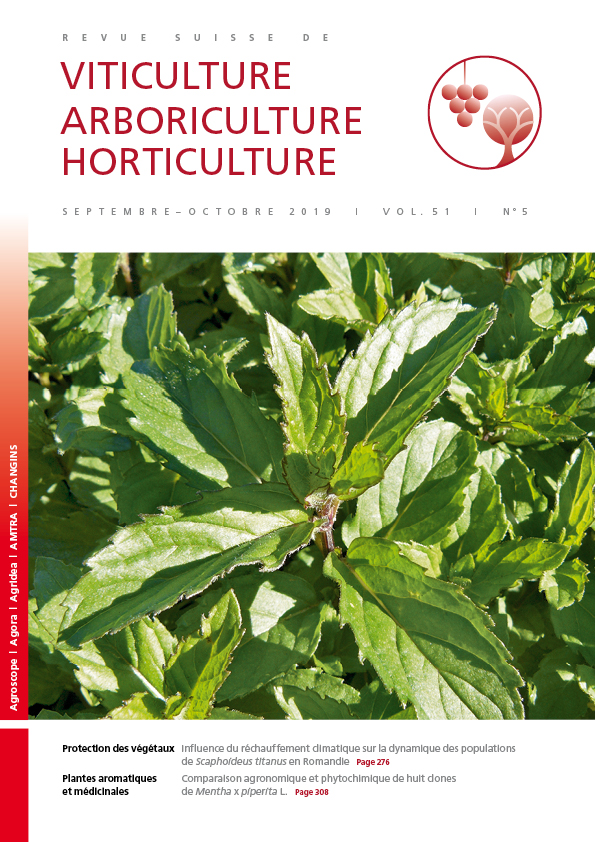
Issue 5 - September - October 2019
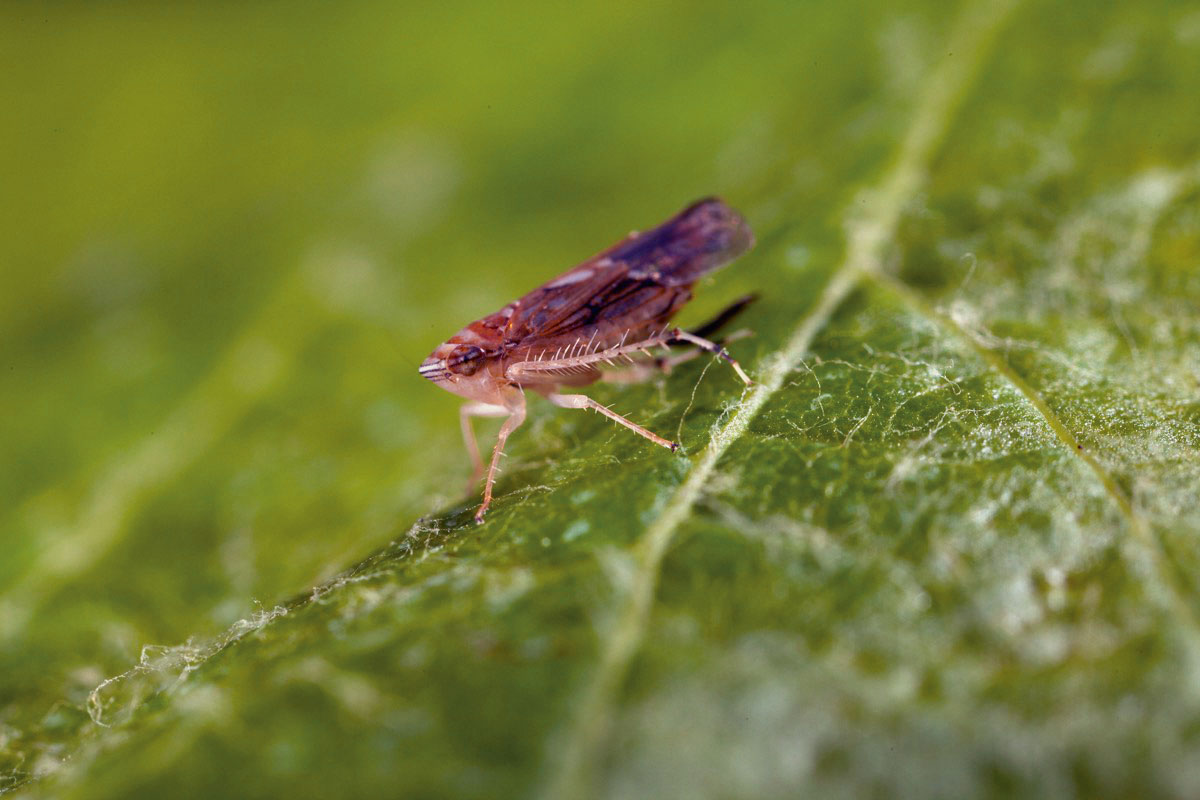
Abstract in open access
The leafhopper Scaphoideus titanus is the vector of Flavescence dorée of grapevine, a serious phytoplasma disease. The potential distribution of S. titanus, its life cycle and the possibility of a second generation have been estimated by 2050 and 2070. Two warming scenarios were chosen, namely an optimistic (RCP2,6) and a pessimistic (RCP8,5) greenhouse gas forcing from 2050 onwards. The ecological life cycle values of S. titanus were crossreferenced with temperature emulation using the delta method. According to these warming scenarios, its distribution should extend to the North and to high altitude, while remaining in the régions where it is already established. Hatching would be earlier and more extended. By 2070 (RCP8,5), interannual climate variability could threaten populations. Eventually, Ticino would become less and less suitable for survival. The RCP8,5 scenario would produce a hypothetical second generation.
Keywords: Scaphoideus titanus, climate change, Flavescence dorée, bivoltine, delta method.
E-Mail: dominique.fleury@etat.ge.ch
Adress: Office cantonal de l’agriculture et de la nature, 1228 Plan-les-Ouates

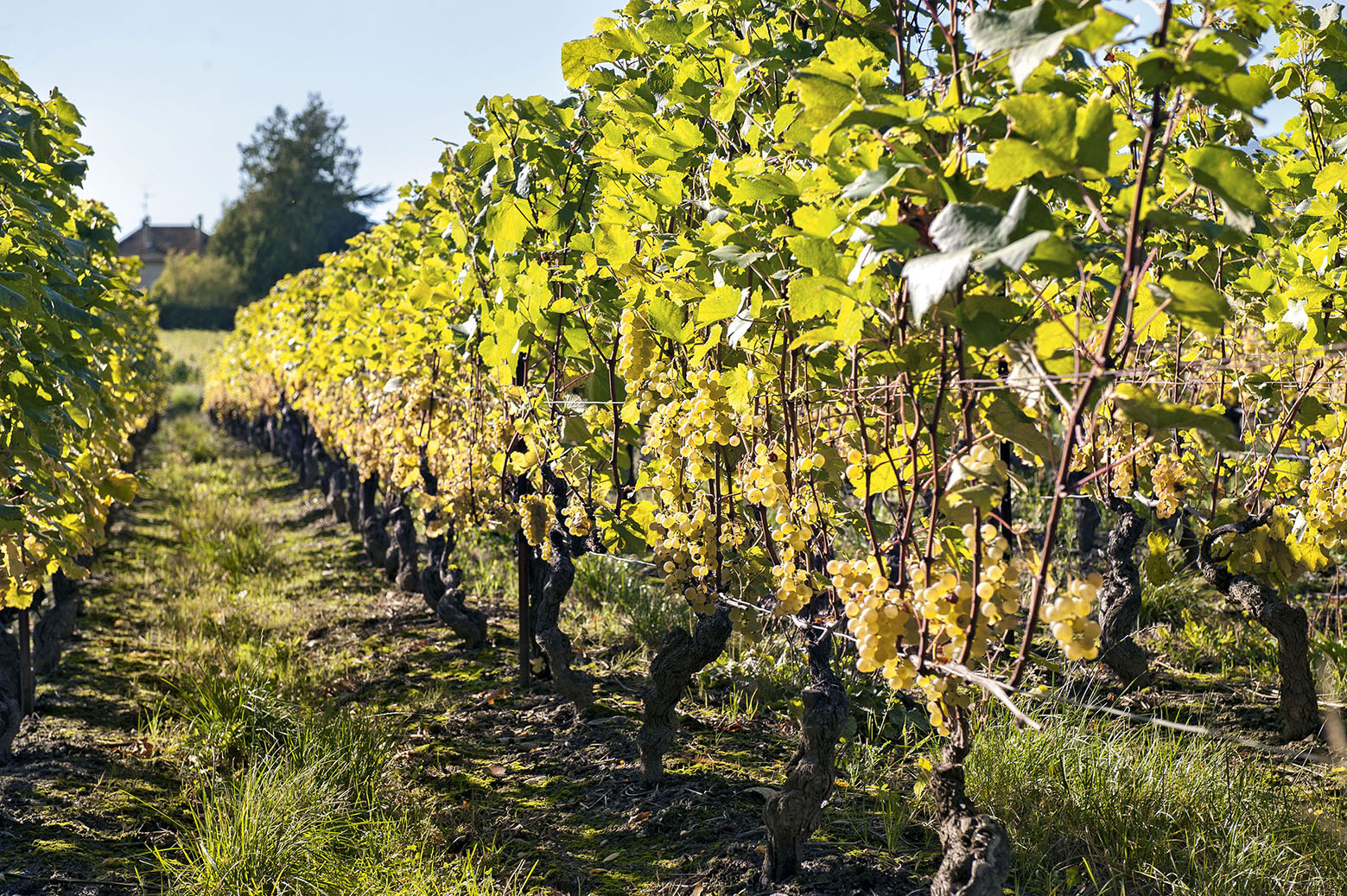
Abstract in open access
The kinetics of grape development and ripening are strongly influenced by the changes in climate that we have witnessed over the past ten years, viz., the alternation of colder and particularly hot years and a regular increase in the average temperature. Chemical composition such as e.g. sugar and acid concentration varies greatly as a function of climatic conditions. These variations can lead to imbalances which affect both biological stability and the organoleptic characteristics of the wines produced. This article describes grape physiology and development, thereby contributing to an improved understanding of the influence of vintage on acid balance. This information is crucial for adapting winemaking practices and suggesting any necessary corrective measures to the wine cellar. The aim of this article is to point out the source of the main acids in the must, and to determine how the conditions of the individual vintages influence composition. In addition, methods for correcting imbalances between acids are highlighted.
Keywords: Grape maturity, grape acids, must acidity, climate change
E-Mail: marie.blackford@agroscope.admin.ch
Adress: Agroscope, 1260 Changins/Nyon
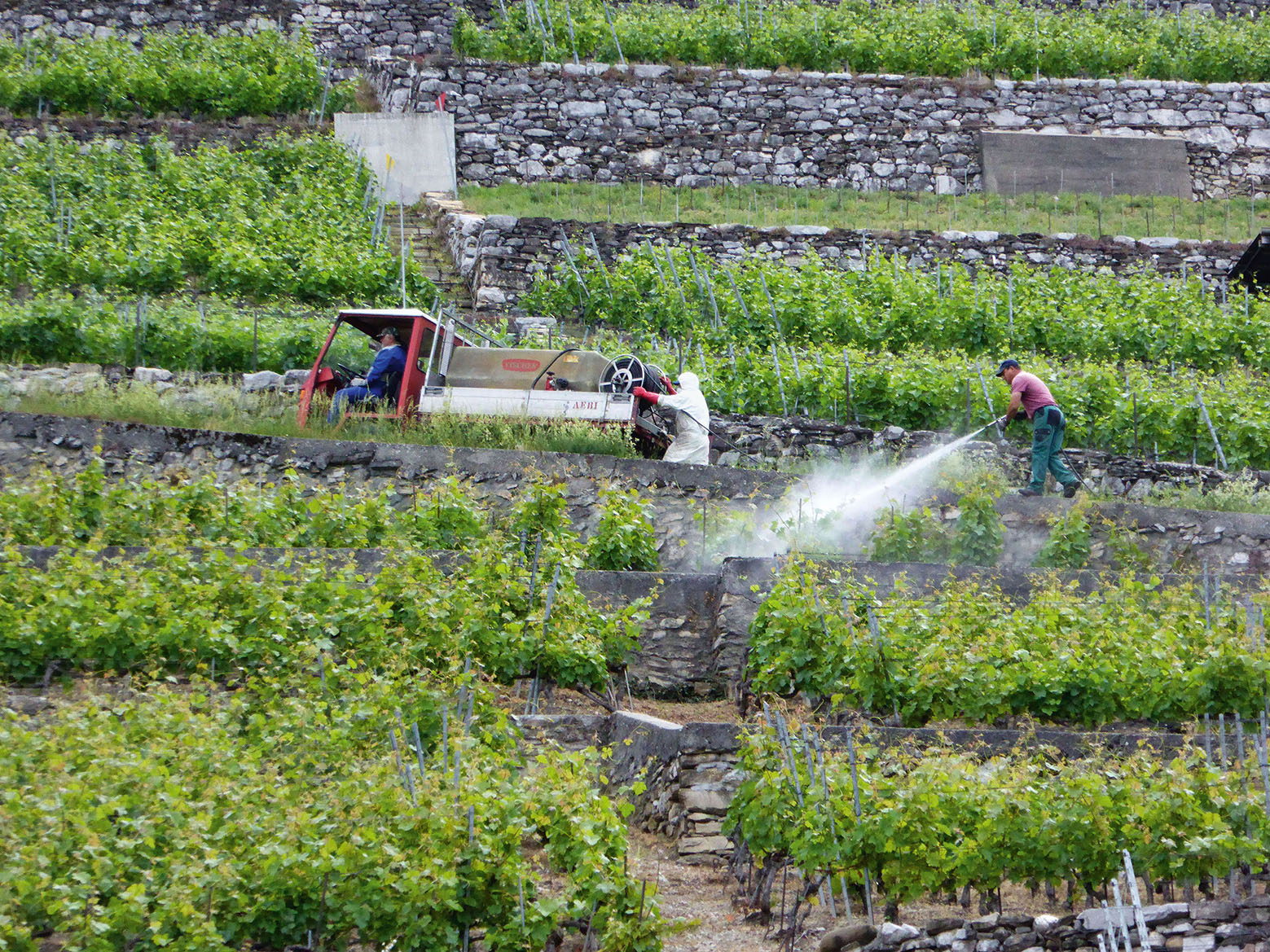
Abstract in open access
The purpose of this literature review is to assess the use of spray guns and cannon sprayers and the risks linked to their use. Spray guns are used in almost all fruit trees and wine-growing régions of Switzerland with about 6400 ha concerned, mainly on high-stem trees and steep vineyards. The canon sprayers cover much smaller areas (> 500 ha), mainly in steep viticulture. The drift caused by spray gun and canon sprayer is higher than for other application methods and environmental conditions strongly influence it. Various recommendations are proposed. For both devices, a specific training module for operators could be developed. Measures such as spraying only inwards at the edge of the plot and near areas to be protected could also be implemented. For canon sprayers, technical adjustments make it possible to limit the drift by reducing the air volume blown and by installing anti-drift nozzles. For the spray gun, improvements in operator protection are imperative.
Keywords: spray gun, cannon sprayer, drift, run off, risk mitigation
E-Mail: pierre-henri.dubuis@agroscope.admin.ch
Adress: Agroscope, 1260 Changins/Nyon
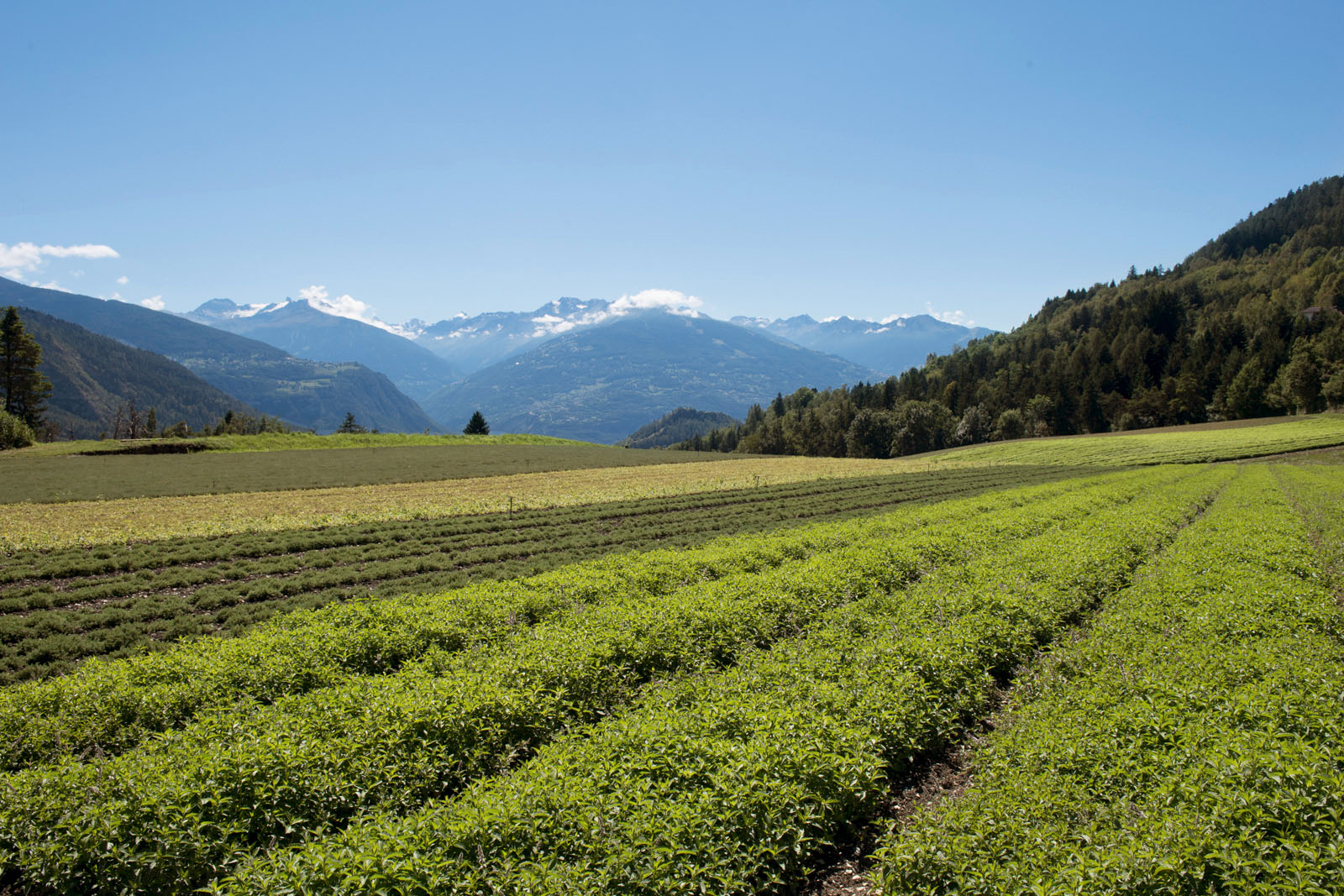
Abstract in open access
However, for a decade, producers have worried about a downward trend in the performance of this genotype. To verify the veracity of these claims, eight clones of peppermint were compared between 2013 and 2017. Four experiments in the field and one in a greenhouse were performed. Compared to the ‘541’ standard, two forma palescens genotypes (‘BLBP02’, ‘BLBP04’), as well as five forma rubescens génotypes (‘BLBP35’, ‘BLBP47’, ‘BLBP56’, ‘Mitcham JS’ and ‘Multimentha’) were selected. The main evaluation criteria were yield of dry matter and leaves, percentage of leaves, content and composition of essential oil, organoleptic quality, and susceptibility to rust. In mountainous climatic conditions, f. palescens genotypes ‘541’ and ‘BLBP 02’ as well as f. rubescens genotypes ‘Multimentha’ and ‘BLBP 56’ proved to be the most productive. In the lowland climate, warmer and under glass, ‘BLBP 47’ and ‘Mitcham JS’ proved to be successful. The essential oil content varied according to seasonal, environmental and phenological factors, whereas the composition of the essential oil was more influenced by the genotype. Principal Component Analysis (PCA) identified four aromatic profiles. In the form of herbal tea, tasters could discriminate between the different chemotypes. ‘BLBP 56’ was preferred to ‘541’, in contrast to the other two aromatic profiles. None of the tested clones were very susceptible to rust, but f. rubescens showed better resistance to this pathogen. In conclusion, choice of genotype must meet market demand. In Switzerland, for the production in agri-food industries, clone ‘541’ remains the standard because its aromatic profile is in line with customers’ expectations and its productivity is high, especially in mountains regions.
Keywords: Mentha x piperita, genotype, chemotype, yield, essential oil, menthol
E-Mail: claude-alain.carron@agroscope.admin.ch
Adress: Agroscope, 1964 Conthey


 Download of full issue
Download of full issue
 Download article
Download article Download article
Download article